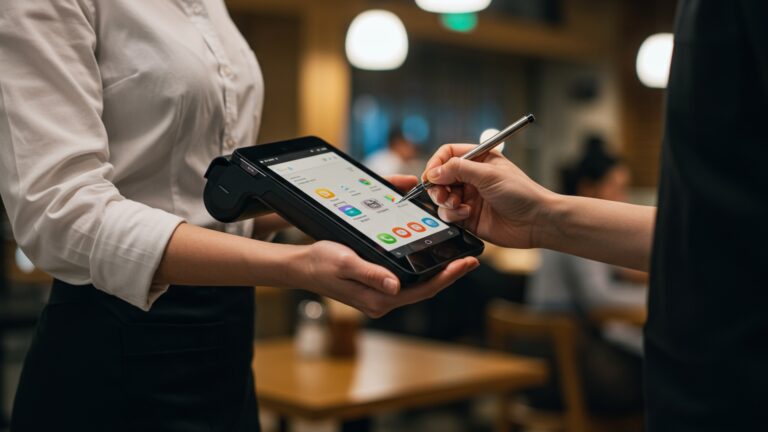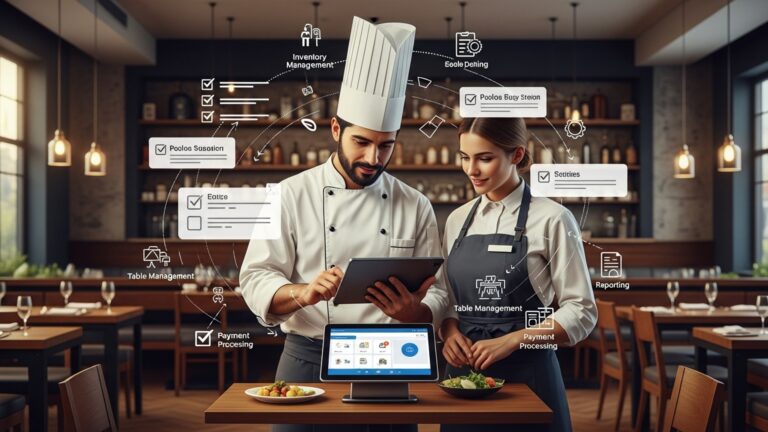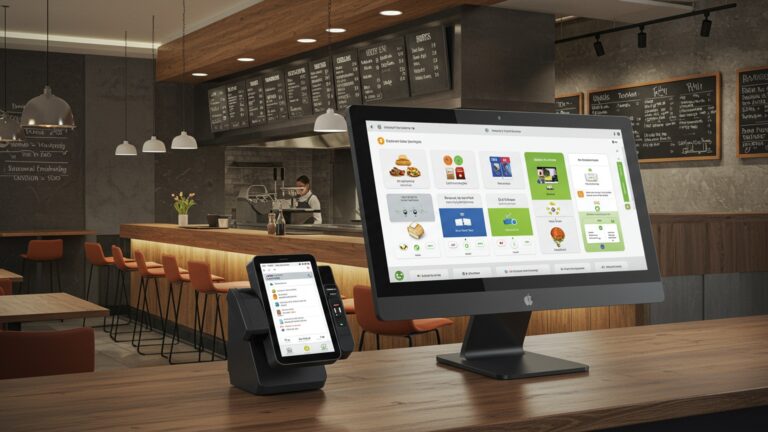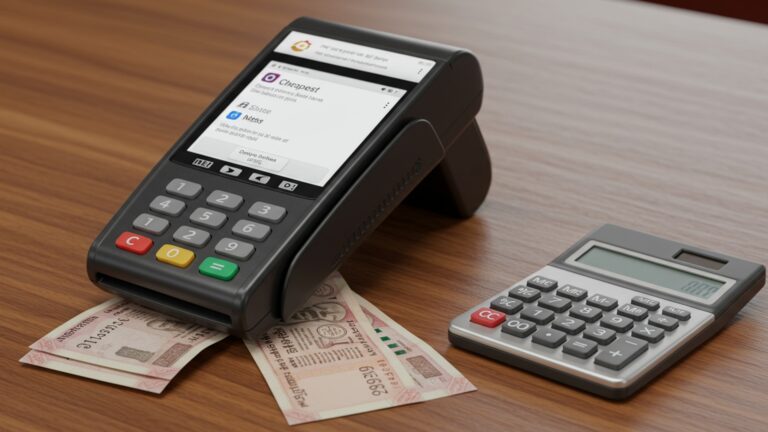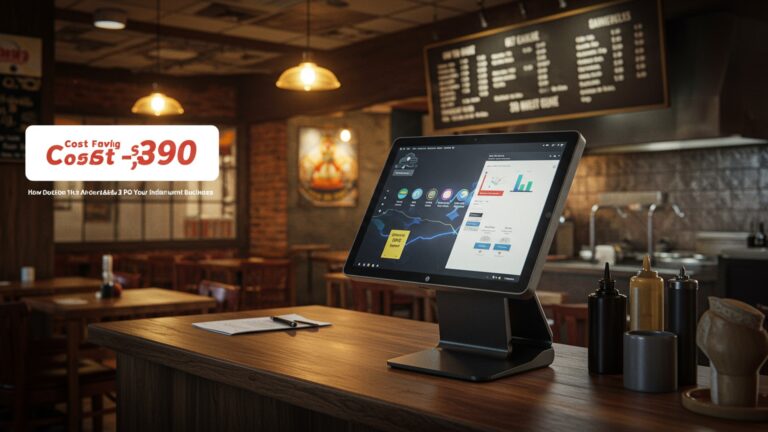10 Factors to Select the Best POS System for Your Indian Restaurant
Navigating the vibrant, often chaotic, landscape of an Indian restaurant demands more than culinary expertise; it requires operational precision. In an era where digital ordering via platforms like Swiggy and Zomato integrates seamlessly with in-house dining, a robust Point-of-Sale (POS) system transforms everyday challenges into opportunities for growth. Simply processing transactions no longer suffices; modern Indian eateries need sophisticated solutions that manage complex, multi-cuisine menus, track real-time inventory for fluctuating demand in ingredients like paneer or basmati rice. optimize staff deployment during peak dinner rushes. Selecting the best POS system for restaurants India involves evaluating platforms that offer intuitive table management, comprehensive analytics. seamless integration with popular digital payment solutions, moving beyond basic billing to intelligent operational control.
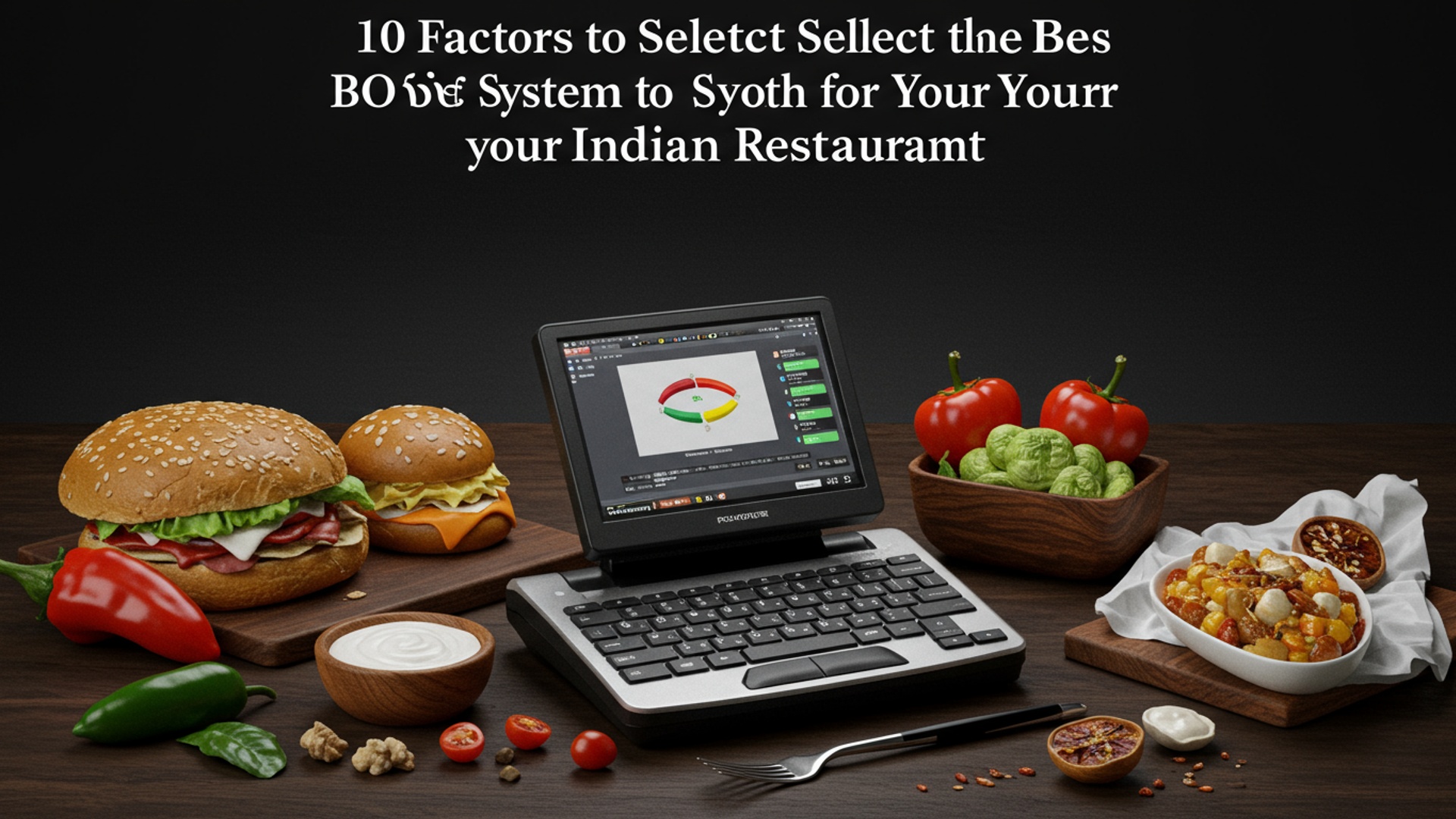
1. Tailored Features for Indian Cuisine and Operations
The unique demands of an Indian restaurant necessitate a POS system that goes beyond generic functionalities. Unlike Western menus, Indian cuisine often involves complex dishes, regional variations. specific service models. The Best POS system for restaurants India should cater to these nuances.
- Thali Management
- Ingredient Tracking & Recipe Management
- KOT Customization (Kitchen Order Ticket)
- Delivery Integration
A good system allows for easy customization of thalis, enabling staff to add or swap components seamlessly while accurately tracking inventory and pricing.
Indian dishes often use a multitude of spices and ingredients. The POS should help you manage these components, track their usage per recipe. alert you when stocks are low. For instance, a restaurant owner in Hyderabad mentioned how their POS helped them reduce wastage of specialty masalas by accurately predicting demand based on sales data.
KOTs need to be clear and detailed, especially for dishes with multiple preparation steps or modifications. The system should allow for custom notes for the kitchen, such as “less spicy,” “no onion,” or “extra ghee.”
With the rise of food delivery platforms like Zomato and Swiggy, seamless integration is crucial. The POS should consolidate orders from these platforms directly into your system, preventing manual errors and saving time.
2. Intuitive User Interface and Ease of Use
A POS system, no matter how feature-rich, is only as good as its usability. Your staff, from servers to kitchen personnel, will be interacting with it daily. An intuitive interface reduces training time, minimizes errors. speeds up service.
- Minimal Training Curve
- Touchscreen Optimization
- Customizable Layouts
Look for systems with a clean, logical layout that can be understood with minimal instruction. This is especially vital in India where staff turnover can sometimes be high. A Bengaluru-based cafe owner shared that their new POS system, which they chose for its simplicity, cut down their staff training from a full day to just a couple of hours.
Most modern POS systems use touchscreens. Ensure the interface is optimized for touch, with large, clear buttons and logical workflows for order taking, modifications. billing.
The ability to customize menu layouts, categories. shortcuts can significantly speed up order entry, especially for popular items or modifiers.
3. Robust Inventory Management Capabilities
For an Indian restaurant, managing inventory effectively is paramount to controlling costs and reducing waste. From raw ingredients like vegetables, spices. dairy to prepared items, a comprehensive inventory module is essential for the Best POS system for restaurants India.
- Ingredient-Level Tracking
- Recipe Management & Costing
- Supplier Management
- Waste Tracking
The system should allow you to track ingredients not just by item. by component. For example, when a “Butter Chicken” is sold, the system should deduct the precise amount of chicken, butter, cream. spices used according to your recipe.
Input your recipes into the system to get accurate food costing per dish. This helps in pricing your menu profitably and understanding your margins.
Keep track of your suppliers, order history. pricing. Some advanced systems can even automate reordering when stock levels hit predefined minimums.
Monitor and report on food waste to identify areas for improvement. This might include spoilage, over-preparation, or plate waste.
4. Comprehensive Reporting and Analytics
Data is gold in the restaurant business. A powerful POS system provides insights into your operations, helping you make informed decisions to boost profitability and efficiency. The Best POS system for restaurants India will offer detailed, customizable reports.
- Sales Reports
- Inventory Reports
- Staff Performance Reports
- GST Compliance
assess sales by dish, category, time of day, server. payment method. Identify your best-selling items, peak hours. slow periods.
Track ingredient usage, identify popular items. monitor stock levels to prevent shortages or overstocking.
Evaluate server performance, order accuracy. average check size.
In India, GST compliance is critical. Ensure the POS system generates accurate GST reports, making tax filing simpler and reducing compliance risks. Many Indian restaurateurs highlight this as a non-negotiable feature.
5. Flexible Billing and Payment Options
Modern diners expect a variety of payment options. Your POS system should be equipped to handle all common payment methods prevalent in India, ensuring a smooth checkout experience.
- Multiple Payment Modes
- Split Billing
- KOT and Bill Generation
- Discounts and Promotions
Support for cash, credit/debit cards (via integrated terminals), UPI (Unified Payments Interface), mobile wallets (Paytm, Google Pay). even loyalty points redemption.
Easily split bills by item, by equal share, or by custom amounts – a common requirement for group dining in Indian restaurants.
Fast and accurate generation of KOTs for the kitchen and final bills for customers. The system should allow for easy modifications before printing.
Seamlessly apply various discounts, coupons. promotional offers, whether percentage-based, amount-based, or specific item deals.
6. Customer Relationship Management (CRM) and Loyalty Programs
Building a loyal customer base is crucial for long-term success. A POS system with integrated CRM functionalities helps you interpret and engage with your patrons effectively.
- Customer Database
- Feedback Management
- Loyalty Programs
- Personalized Marketing
Collect and store customer data like names, contact details, order history. preferences. This data can be invaluable for personalized marketing.
Some systems allow customers to provide feedback directly through the POS or integrated digital channels, helping you address issues promptly and improve service.
Implement points-based systems, tiered rewards, or exclusive discounts for returning customers. A Mumbai restaurant successfully used their POS’s loyalty module to offer “buy 5 thalis, get 1 free” which significantly boosted repeat business.
Use customer data to send targeted promotions, birthday wishes, or special offers, fostering a stronger connection with your clientele.
7. Seamless Integration Capabilities
Your POS system should not operate in a silo. Its ability to integrate with other essential software and platforms can streamline operations, reduce manual data entry. improve overall efficiency.
- Third-Party Delivery Platforms
- Accounting Software
- Online Ordering Systems
- Payment Gateways
As mentioned, integration with Swiggy, Zomato. other local delivery services is vital to consolidate orders and avoid manual transcription.
Link your POS with popular accounting software like Tally or Zoho Books to automate financial reporting, reconcile sales. simplify tax preparation.
If you have your own website or app for online orders, ensure the POS can integrate to manage these orders alongside dine-in and delivery.
Integration with various payment gateways ensures smooth and secure transactions, whether in-person or online.
8. Scalability and Future-Proofing
Your restaurant business is likely to grow. your POS system should be able to grow with it. Choosing a scalable solution prevents the need for costly and disruptive replacements down the line.
- Cloud-Based vs. On-Premise
- Multi-Location Management
- API Capabilities
| Feature | Cloud-Based POS | On-Premise POS |
|---|---|---|
| Data Storage | Remote servers (internet required) | Local servers (within restaurant) |
| Accessibility | Anywhere, any device | Only within restaurant network |
| Upgrades | Automatic, regular | Manual, often paid |
| Initial Cost | Lower (subscription) | Higher (hardware, software license) |
| Maintenance | Handled by vendor | Handled by restaurant/IT team |
| Scalability | Easier to add terminals/locations | More complex, hardware-dependent |
Many Indian restaurants, especially those planning multiple outlets, find cloud-based systems more flexible and cost-effective in the long run. They offer real-time data access across locations.
If you foresee expanding to multiple branches, ensure the system supports centralized management of menus, inventory. reports across all your outlets.
An open API (Application Programming Interface) allows for custom integrations with future technologies or specific business tools you might adopt.
9. Reliable Support and Training
Even the most user-friendly system can encounter issues. Having access to prompt, knowledgeable support is critical to minimize downtime and keep your operations running smoothly. The Best POS system for restaurants India will offer robust support.
- Local Support
- 24/7 Availability
- Multiple Support Channels
- Initial Training
In India, having local support that understands regional challenges, payment methods. even local languages can be a huge advantage.
Restaurants operate long hours, often late into the night. Ensure the vendor offers 24/7 support for critical issues.
Look for support via phone, email, chat. potentially a knowledge base or online tutorials.
The vendor should provide comprehensive initial training for your staff to ensure a smooth transition and effective utilization of the system. A restaurateur in Chennai recounted how excellent vendor training made their POS switch almost effortless for their team.
10. Cost-Effectiveness and Return on Investment (ROI)
While cost is an essential factor, it shouldn’t be the sole determinant. Focus on the value and return on investment the POS system brings to your Indian restaurant.
- Pricing Models
- Hardware Costs
- Hidden Fees
- Calculating ROI
interpret if it’s a one-time purchase, a monthly/annual subscription, or a hybrid model. Cloud-based systems typically involve subscriptions.
Factor in the cost of POS terminals, printers, cash drawers. barcode scanners. Some vendors offer bundled packages.
Inquire about installation fees, training costs, ongoing support charges. upgrade fees.
Consider how the POS will save you money (reduced waste, faster service, fewer errors) and help you earn more (better reporting, loyalty programs, efficient delivery). For example, a restaurant in Pune calculated that their new POS system paid for itself within 10 months through reduced inventory shrinkage and improved operational efficiency. The initial outlay for the Best POS system for restaurants India should be viewed as an investment, not just an expense.
Conclusion
Choosing the right POS system for your Indian restaurant isn’t merely a technological upgrade; it’s a strategic investment in efficiency and growth. Having explored the critical factors, your next step is to actively seek a solution that truly understands the unique rhythm of your establishment, from managing diverse regional cuisines to seamlessly handling peak festive seasons. My personal tip: prioritize a system with robust online ordering integrations, given the current trend of platforms like Swiggy and Zomato. ensure it supports rapid digital payments like UPI and QR codes – a non-negotiable for today’s Indian customer. Don’t overlook crucial backend features; a comprehensive understanding of essential POS software features will ensure you’re equipped for inventory control and staff management. Test the user interface extensively and verify local support, as immediate assistance can be a lifesaver during service hours. Embrace this digital transformation not just as a tool. as a partner that empowers you to streamline operations, enhance customer experiences. ultimately, elevate your restaurant’s success in a competitive landscape. Your perfect POS system is out there, ready to unlock your restaurant’s full potential.
More Articles
How to Optimize Your Restaurant with Smart POS Software Solutions
Discover 7 Essential Features for Your Restaurant Billing Software in India
A Guide to 10 Essential Online Ordering POS Systems in India
Learn How Smart POS Billing Software Boosts Business Efficiency
Your Complete Guide to Integrated Billing and POS Software
FAQs
Why is ease of use so crucial for a POS system in an Indian restaurant?
Indian restaurants often have staff with varied tech proficiency. A simple, intuitive POS system drastically reduces training time, minimizes order errors. ensures smoother service, especially during busy hours, keeping your operations efficient.
What specific features should I look for that cater to Indian cuisine?
Definitely prioritize features that handle complex orders common in Indian food, like customizable thali options, variable spice levels, combo meals. efficient Kitchen Order Ticket (KOT) management. Robust table management and easy bill splitting are also super helpful.
How does inventory management benefit an Indian restaurant?
It’s a huge advantage! An integrated inventory system tracks specific ingredients like spices, dals. key vegetables. This helps you manage stock levels, reduce food wastage. get a clear picture of your actual food costs, which is crucial for profitability in a cuisine with many components.
Is it really necessary to have local customer support for a POS in India?
Absolutely! Having local support means quicker resolution for any technical glitches, less downtime. assistance that understands the local context. It’s vital for uninterrupted service, preventing lost sales and customer frustration, especially during peak dining times.
Should I consider a POS system that offers offline functionality?
Yes, you definitely should! Power cuts or internet connectivity issues can happen unexpectedly. An offline-capable POS ensures your core operations, like taking orders, generating bills. processing payments, continue smoothly without disruption, preventing any halt in service or lost revenue.
How vital are reporting and analytics features for my restaurant’s growth?
They’re incredibly crucial! Good reporting gives you deep insights into your best-selling dishes, peak business hours, staff performance. overall sales trends. This data empowers you to make smarter, data-driven decisions about your menu, staffing. promotions to boost profitability.
What about integration with popular Indian food delivery platforms?
It’s highly recommended! Seamless integration with services like Zomato or Swiggy streamlines your online orders directly into your POS. This eliminates manual entry, reduces errors, improves order accuracy. helps manage inventory more effectively across both dine-in and delivery channels.

